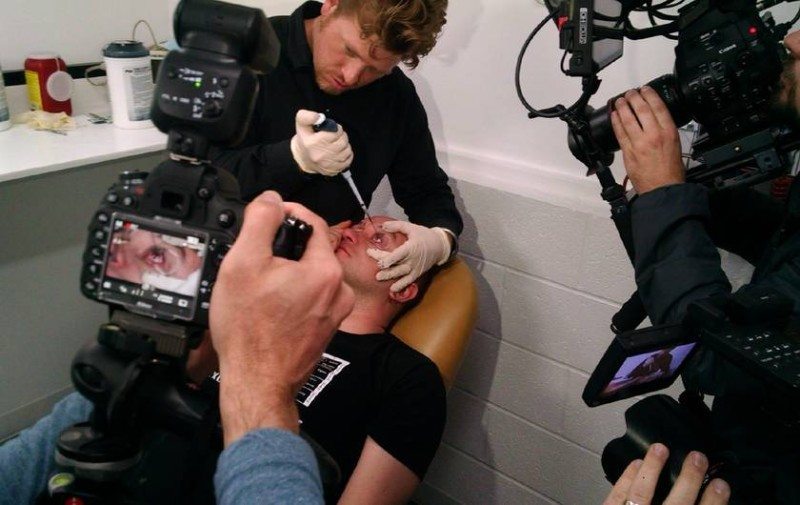A Team of Biohackers Figured out How to Inject Night Vision in Your Eyes
Gabriel Roşu / 10 years ago

It looks like nothing comes with limits nowadays, having a group of independent researchers figuring out how to give night vision to humans and allow them to see over 50 meters in the dark for a short time.
The group is called Science of the Masses and have their little ‘base of operations’ a couple of hours north of Los Angeles in Tehachapi, California. They have theorised that they could enhance a human being’s eyesight enough that it would induce night vision with the help of a kind of chlorophyll analogue called Chlorin e6 (Ce6), which studies found in deep-sea fish and which is also used in occasional methods of treating night blindness.
“Going off that research, we thought this would be something to move ahead with,” the lab’s medical officer, Jeffrey Tibbetts, told Mic. “There are a fair amount of papers talking about having it injected in models like rats, and it’s been used intravenously since the ’60s as a treatment for different cancers. After doing the research, you have to take the next step.”
Team biochem researcher, Gabriel Licina, has offered to take part in this experiment and has been injected with 50 microliters of Ce6, an extremely low dose. The dose was injected into Licina’s speculum-stretched eyes, aiming for the conjunctival sac, carrying the chemical to the retina. After about an hour, the effects started to kick in.

Licina and Tibbetts had done their research, going so far as to post a paper called “A Review on Night Enhancement Eyedrops Using Chlorin e6“. However, they still are just a bunch of guys working out of a garage, so credibility is in question here. This is why they went out on a field test.
The results were promising, having started with Licina recognising shapes 10 meters away in pitch black darkness conditions. After a short time, he was able to do longer distances, recognizing symbols and identifying moving subjects against different backgrounds. During the test, it is said that Licina had a 100% rate of success in identifying objects, while the control group without being dosed with the Ce6 got the shapes right a third of the time.
“The other test, we had people go stand in the woods,” he says. “At 50 meters, we could figure out where they were, even if they were standing up against a tree.”
While this seems as a plaything for people to toy around with in the woods at night, it does have some strong real-word applications too. Two good fields that would really benefit from this would be search-and-rescue teams, being able to see in the dark in forested areas, or in hostage situations.
The next step for the team is to do more tests and get some ‘real numbers’ on the electrical stimulation in the eye. For now, the biggest success is that the first experiment worked.
Thank you Science Mic for providing us with this information



















